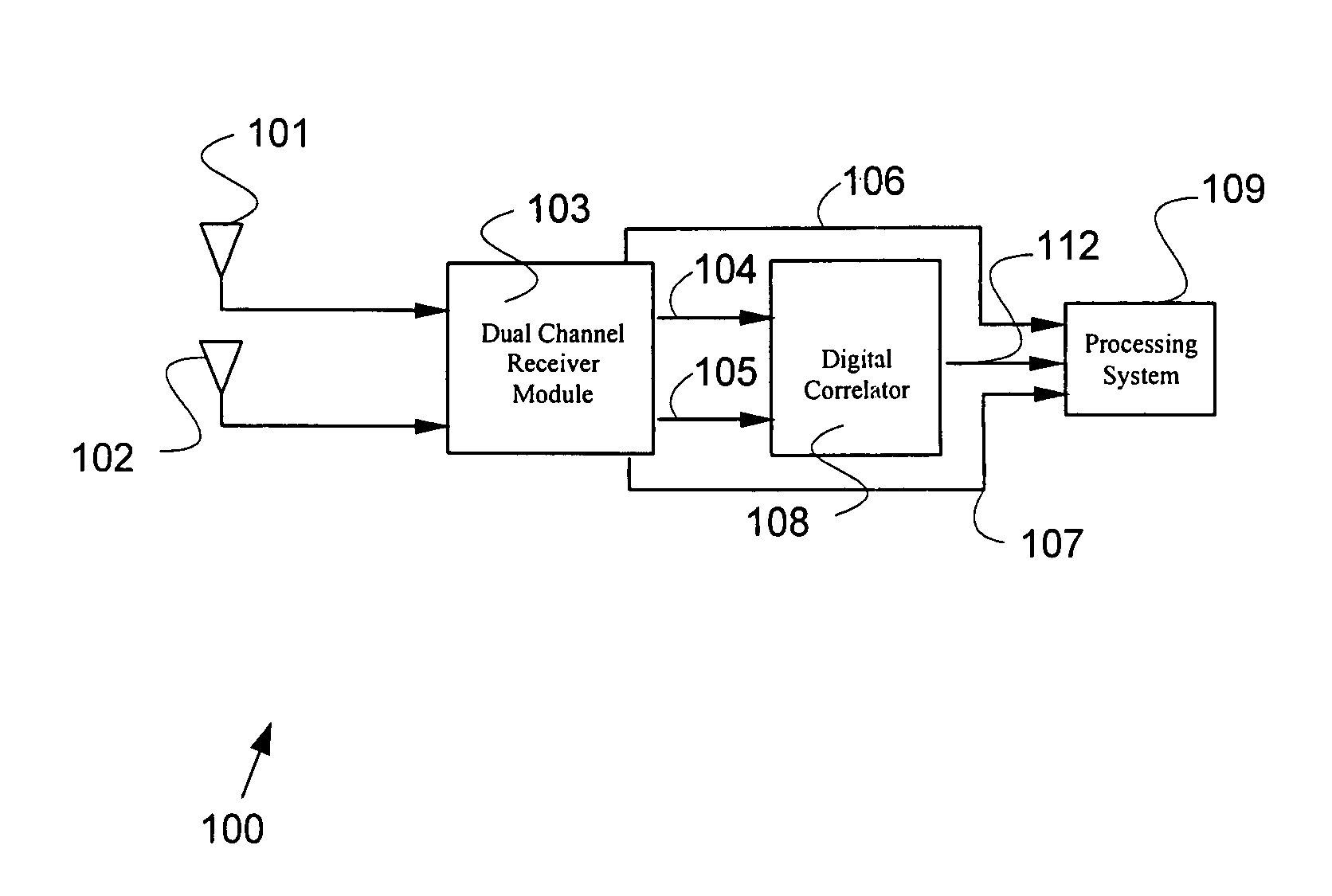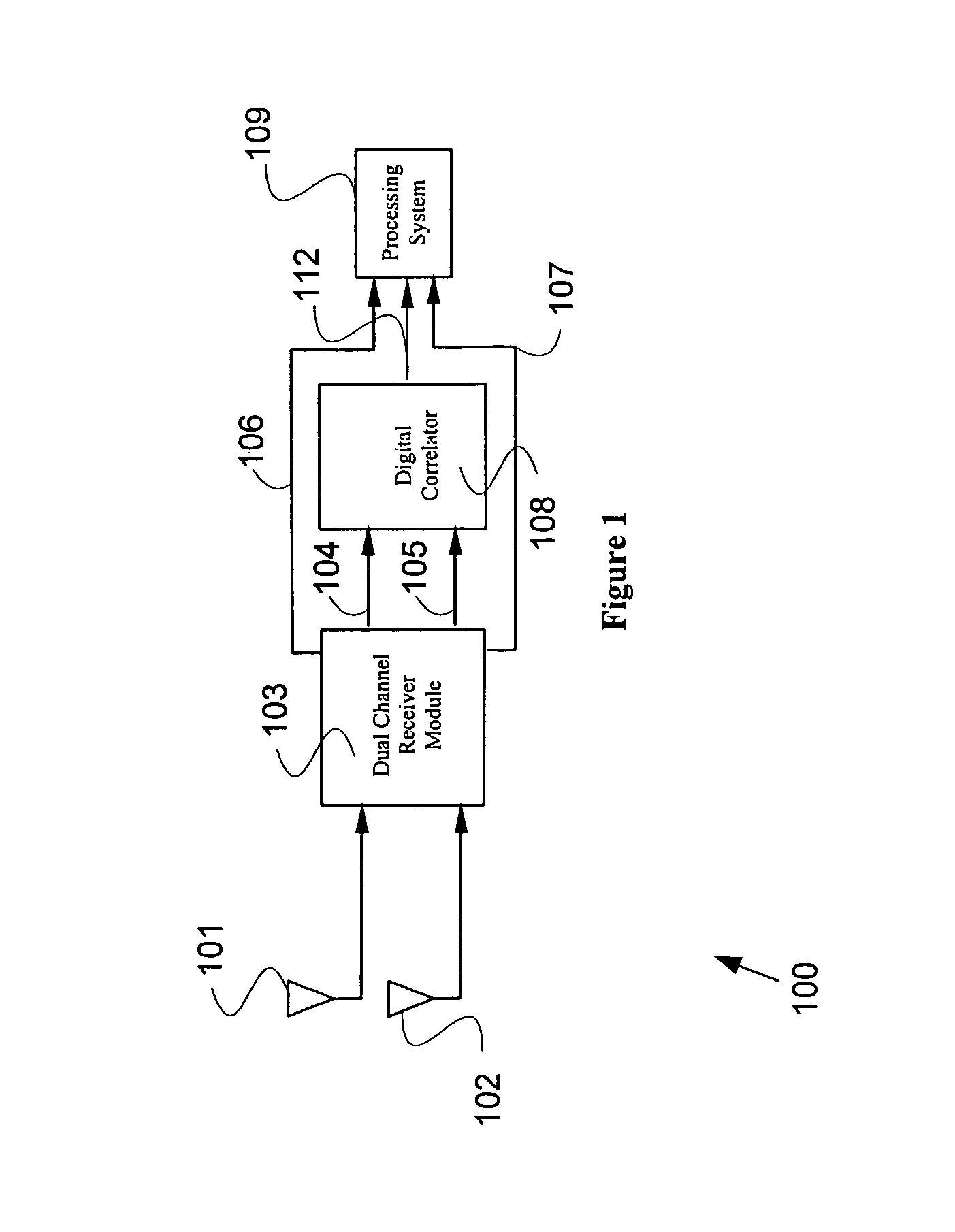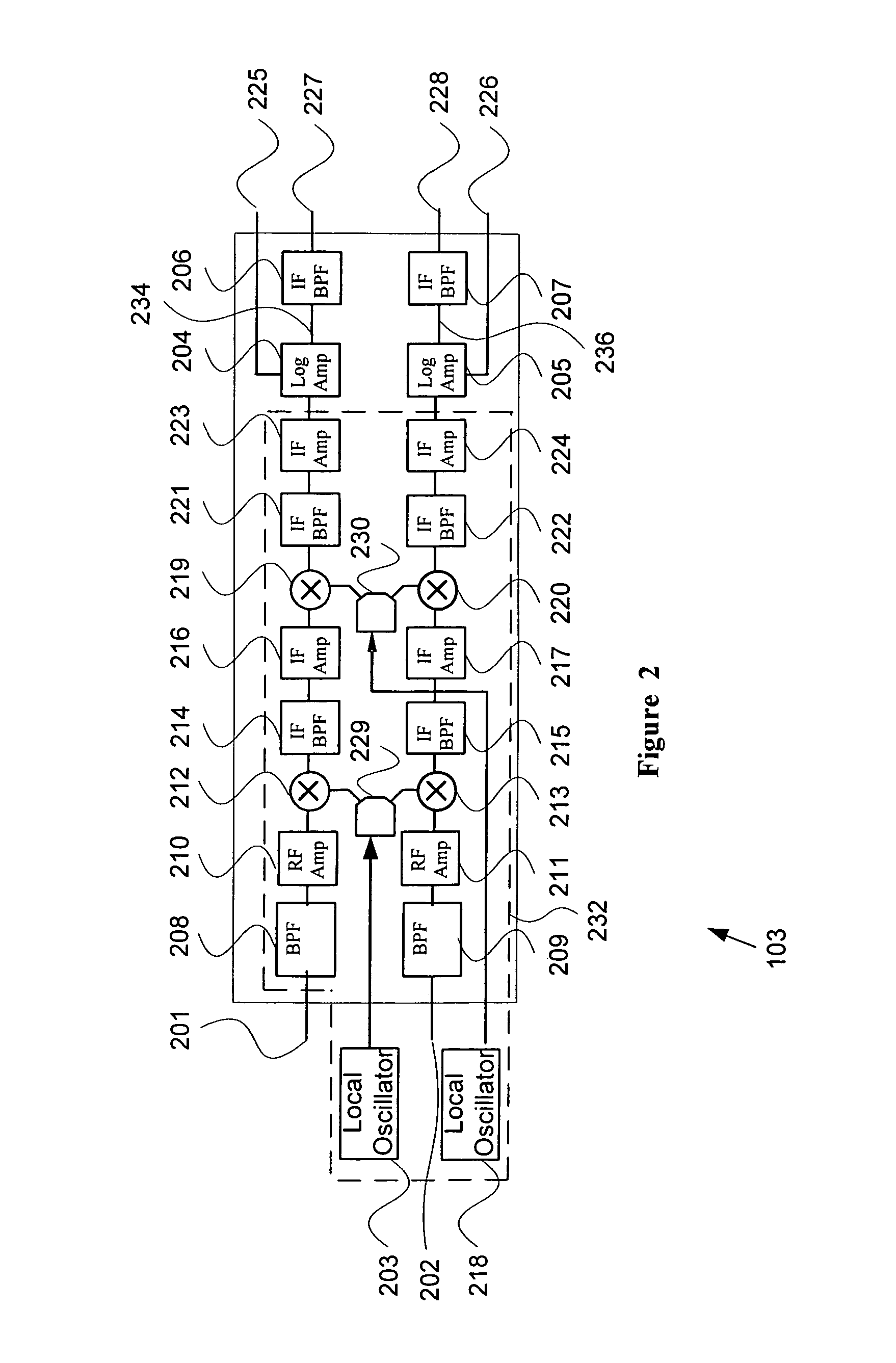System and method for cross correlation receiver
a receiver and cross-correlation technology, applied in the field of detection objects, can solve the problems of inability to determine the coherence between the receivers, the fluctuation of the amplification gain of the correlative receiver is usually not compensated, and the antenna and other microwave components located in front of the correlator contribute a small amount of noise, so as to achieve the effect of reducing the noise, reducing the noise, and reducing the nois
- Summary
- Abstract
- Description
- Claims
- Application Information
AI Technical Summary
Benefits of technology
Problems solved by technology
Method used
Image
Examples
Embodiment Construction
[0022]The present invention relates in general to detecting objects and / or areas. More particularly, the invention provides a method and system for signal correlation. Merely by way of example, the invention is described as it applies to correlating two signals, but it should be recognized that the invention has a broader range of applicability.
[0023]FIG. 1 is a simplified diagram for a cross-correlation receiver according to one embodiment of the present invention. This diagram is merely an example, which should not unduly limit the scope of the present invention. One of ordinary skill in the art would recognize many variations, alternatives, and modifications. A cross-correlation receiver 100 includes antennas 101 and 102, a dual channel receiver module 103, a digital correlator 108, and a processing system 109. Although the above has been shown using systems 101, 102, 103, 108, and 109, there can be many alternatives, modifications, and variations. For example, some of the system...
PUM
 Login to View More
Login to View More Abstract
Description
Claims
Application Information
 Login to View More
Login to View More - R&D
- Intellectual Property
- Life Sciences
- Materials
- Tech Scout
- Unparalleled Data Quality
- Higher Quality Content
- 60% Fewer Hallucinations
Browse by: Latest US Patents, China's latest patents, Technical Efficacy Thesaurus, Application Domain, Technology Topic, Popular Technical Reports.
© 2025 PatSnap. All rights reserved.Legal|Privacy policy|Modern Slavery Act Transparency Statement|Sitemap|About US| Contact US: help@patsnap.com



